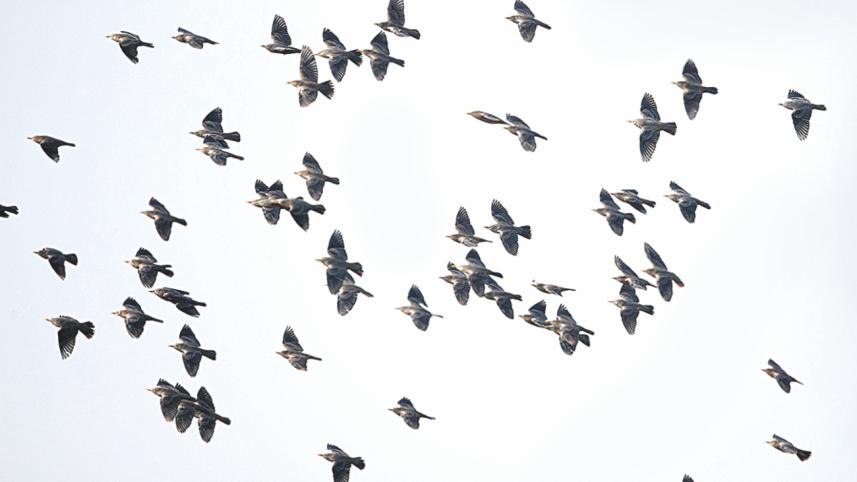A Murder of Crows

English can be a funny language. Consider for example the terms for groups of birds, animals, fish and other living beings, or even groups of people. The collective nouns used to describe these groups are often startling. For example, being an avid birder, terms such as “a kettle of hawks” catch my attention.
Researching this topic, I learned that many of these terms were invented in 15th century England. They come from outdoor life, in particular, activities of interest to aristocrats: hunting, hawking (hunting with a hawk), and heraldry. Called terms of venery (venery is an old word for hunting) they also encapsulate a code that the genuine aristocrat would be able to speak, whereas aspiring ones would be frustrated by. This would separate the poser from the blue-blood and cause embarrassment to the wannabe at the dinner table. Because of their social value, these words were also called “company terms.”
Terms of venery were formalised in several books from that period: The Book of St. Albans (1486), The Egerton Manuscript (1450), and The Craft of Venery (1450.) At one time they were taught to young gentry for the above mentioned purpose, but over the subsequent centuries the usage of some of these words declined
Revival came in the 20th century. In a book called An Exaltation of Larks (1968), James Lipton lists over 1000 such words in English. With infectious admiration he states that much imagination, wit and semantic ingenuity went into the invention of each term. He also spells out reasons behind the choice of certain words.
Here are some interesting terms for groups:
Flocks of geese have two names. A group of geese in the ground is a gaggle, but in flight it is a skein. Similarly ducks in water form a paddling while flying ducks are a team.
A group of crows is called a murder of crows. No one seems to know the exact reason for this appellation, but it is thought that crows were seen around dead people during the plagues, and so were associated with death. Perhaps more appropriately, a group of crows is also called a congress of crows.
An unkindness of ravens came about because of the legend that ravens push their young from the nest.
A flock of starlings is called a murmuration. This old and honourable term appeared as “a murmuracion of stares” in the old books.
Herons often stand at water's edge waiting for fish. Apparently comparing this to enemies laying siege to a castle, a group of herons is called a siege of herons. A deceit of lapwings alludes to trickery used by the bird to draw predators away from its nest.
Why is a group of lions called a pride? Some groups were named according to real or perceived qualities, and since lions look regal, pride was what they got. Similarly: a leap of leopards, a mob of kangaroos, a sloth of bears, and a crash of rhinoceros.
Sometimes mistakes were made. A shoal of fish became a school of fish thanks to an error-prone ancient scribe.
Some of our common terms for groups of people also have similar roots: a den of thieves, a bevy of beauties. And Americans have a college of electors to choose their president.
facebook.com/tangents.ikabir



 For all latest news, follow The Daily Star's Google News channel.
For all latest news, follow The Daily Star's Google News channel.
Comments